Amy Heller is a Tibetologist and art historian.
Amy Heller is a Tibetologist and art historian.
Since 1986, Heller has been associated with the Center National de la recherche scientifique in Paris and subsequently also to the Tibetan and Himalayan Library. She studied Art History at Barnard College of Columbia University (B. A. cum laude 1973) and Tibetan language and civilisation at the National Institute of Oriental Languages in Paris (diploma in 1979). She earned her Ph.D. in 1992 in philology and history of Tibet at the École pratique des hautes études in Paris. She is currently visiting professor since 2007 at the Centre for Tibetan Studies, University of Sichuan, Chengdu, China. She was visiting professor at La Sapienza, university of Rome, Italy, in 2006 and 2008.
Heller has traveled numerous times to the Tibet Autonomous Region, Nepal and also traveled along parts of the Silk Route including Dunhuang and the Qinghai regions, where she investigated Tibetan tombs in Dulan, Qinghai in 1997. Since 1995, she worked in a project to restore Tibetan architecture in Tibetan monasteries, notably Grathang and Zhalu, Iwang. She was appointed by the Swiss Federal government to supervise the roof restoration project of the Ramoche Temple, Lhasa, from 2004 to 2006, under the auspices of the Swiss Ministry of Culture and the Swiss Foreign Affairs.
She published in 1999 Art et Sagesses du Tibet; in English, Tibetan Art Tracing the development of Spiritual Ideals and Art in Tibet 600–2000. In addition to the French and the English editions, Italian and Spanish translations were published by JAca book and Libsa SA, respectively. In 2007, she published the catalogue of the Ashmolean Museum, Early Himalayan Art. This catalogue is now online in the Jameel Centre of the Ashmolean Museum. [1] In 2009, she published Hidden Treasures of the Himalayas Tibetan manuscripts, paintings and sculptures of Dolpo, Serindia publications, Chicago, 2009 (see www.Serindia.com). In addition, she has published on architecture and Tibetan art, Tibetan history, some 75 articles and museum catalogues, working with the Ashmolean Museum, Oxford (England), Musée Guimet, Paris (France), the Metropolitan Museum of Art, New York, the Art Institute of Chicago, and the Tibetan collection of The Newark Museum, Newark, NJ.
Heller several times was curator for exhibitions in Tibetan art, including for the Beinecke Rare Book and Manuscript Library and Yale University Art Gallery, both part of Yale University.
In the mid-2000s, she worked on research of 650 volumes of Tibetan manuscripts from the late 11th to early 12th to the 16th century on the cultural history of Dolpo temple in Nepal, resulting in the 2009 book: Hidden Treasures of the Himalayas: Tibetan manuscripts, paintings and sculptures of Dolpo.
2011–2013, Heller has been a research associate at the School of Oriental and African Studies. [2]
2014–2016, Heller has been lecturer on Tibetan Archaeology at the National Institute of Oriental Languages (INALCO Paris).
2017–2018, Heller taught at University of Bern invited by the Institute of Science of Religions and Central Asian Studies. Subsequently, she is affiliated with this institute and taught Art and Architecture of Tibet and Mongolia in 2019–2020. [3]

The Tibetic languages form a well-defined group of languages descended from Old Tibetan. According to Tournadre (2014), there are 50 languages, which split into over 200 dialects or could be grouped into 8 dialect continua. These languages are spoken in the Tibetan Plateau and in the Himalayas in Gilgit-Baltistan, Aksai Chin, Ladakh, Nepal, Himachal Pradesh, Uttarakhand, and Bhutan. Classical Tibetan is the major literary language, particularly for its use in Buddhist literature.
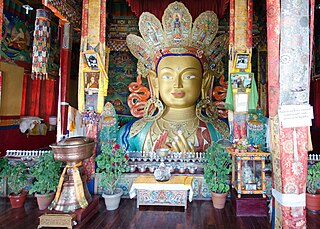
The vast majority of surviving Tibetan art created before the mid-20th century is religious, with the main forms being thangka, paintings on cloth, mostly in a technique described as gouache or distemper, Tibetan Buddhist wall paintings, and small statues in bronze, or large ones in clay, stucco or wood. They were commissioned by religious establishments or by pious individuals for use within the practice of Tibetan Buddhism and were manufactured in large workshops by monks and lay artists, who are mostly unknown. Various types of religious objects, such as the phurba or ritual dagger, are finely made and lavishly decorated. Secular objects, in particular jewellery and textiles, were also made, with Chinese influences strong in the latter.
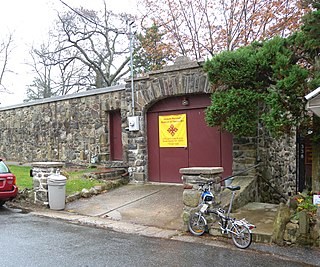
The Jacques Marchais Museum of Tibetan Art is a museum located on the residential Lighthouse Hill in Egbertville, Staten Island, New York City. It is home to one of the United States' most extensive collections of Himalayan artifacts. The museum was created by Jacques Marchais, (1887-1948) an American woman, to serve as a bridge between the West and the rich ancient and cultural traditions of Tibet and the Himalayan region. Marchais designed her educational center to be an all-encompassing experience: it was built to resemble a rustic Himalayan monastery with extensive terraced gardens and grounds and a fish and lotus pond. The museum was praised for its authenticity by the Dalai Lama, who visited in 1991. In 2009, the site was listed on the New York State Register and National Register of Historic Places. A writer in the New York Times referred to the museum's founder under the name Jacqueline Klauber, noting that she used Marchais as her professional name.

Michael Vaillancourt Aris was a British historian who wrote and lectured on Bhutanese, Tibetan, and Himalayan culture and history. He was the husband of Aung San Suu Kyi, who would later become State Counsellor of Myanmar.

A thangka is a Tibetan Buddhist painting on cotton, silk appliqué, usually depicting a Buddhist deity, scene, or mandala. Thangkas are traditionally kept unframed and rolled up when not on display, mounted on a textile backing somewhat in the style of Chinese scroll paintings, with a further silk cover on the front. So treated, thangkas can last a long time, but because of their delicate nature, they have to be kept in dry places where moisture will not affect the quality of the silk. Most thangkas are relatively small, comparable in size to a Western half-length portrait, but some are extremely large, several metres in each dimension; these were designed to be displayed, typically for very brief periods on a monastery wall, as part of religious festivals. Most thangkas were intended for personal meditation or instruction of monastic students. They often have elaborate compositions including many very small figures. A central deity is often surrounded by other identified figures in a symmetrical composition. Narrative scenes are less common, but do appear.

Dolpo is a high-altitude culturally Tibetan region in the upper part of the Dolpa District of western Nepal, bordered in the north by China. Part of the region lies in Shey Phoksundo National Park. The sparse, agro-pastoral population, known as Dolpo in standard Tibetan and Dhol-wa in the local dialect, is connected to the rest of Nepal via Jufal airport, which can be reached in three days by horse. There are no precise population numbers for the region, with estimates including less than 5,000 and 18,000

The Digital Himalaya project was established in December 2000 by Mark Turin, Alan Macfarlane, Sara Shneiderman, and Sarah Harrison. The project's principal goal is to collect and preserve historical multimedia materials relating to the Himalaya, such as photographs, recordings, and journals, and make those resources available over the internet and offline, on external storage media. The project team have digitized older ethnographic collections and data sets that were deteriorating in their analogue formats, so as to protect them from deterioration and make them available and accessible to originating communities in the Himalayan region and a global community of scholars.
Wang Ziyun was a Chinese oil painter, sculptor and archaeologist, born in Xuzhou, Jiangsu, China.
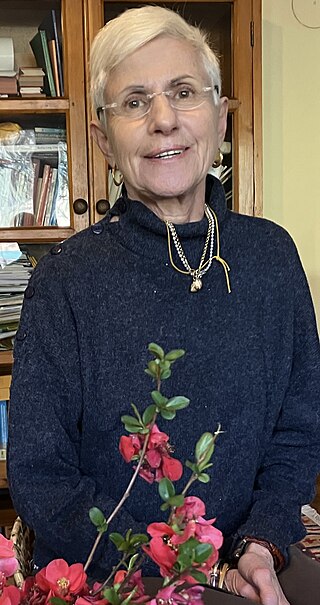
Françoise Pommaret is a French ethno-historian and Tibetologist.
Charles Albert Edward Ramble is an anthropologist and former University Lecturer in Tibetan and Himalayan Studies at the Oriental Institute, Oxford University. Since 2009 he has been Professor and Directeur d'études at the Ecole pratique des hautes études, Paris. Between 2006 and 2013 he was elected president of the International Association for Tibetan Studies (IATS) and convened the 10th seminar of IATS at Oxford in 2003.

George Nicolas de Roerich was a prominent 20th century Tibetologist. His name at birth was YuriNikolaevich Rerikh. George's work encompassed many areas of Tibetan studies, but in particular he is known for his contributions to Tibetan dialectology, his monumental translation of the Blue Annals, and his 11-volume Tibetan-Russian-English dictionary.
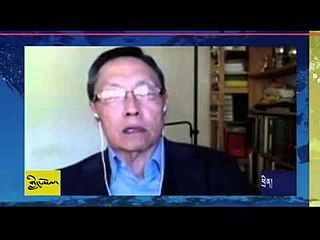
Samten Gyeltsen Karmay (1936-) is a writer and researcher in the field of Tibetan Studies. His work is focused on the study of Tibetan myths, beliefs, the Bon religion and religious history.
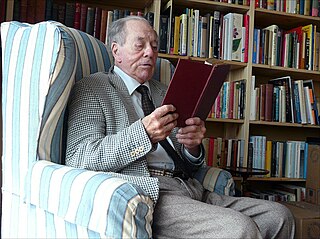
David Llewellyn Snellgrove, FBA was a British Tibetologist noted for his pioneering work on Buddhism in Tibet as well as his many travelogues.

Purang-Guge kingdom was a small Western Himalayan kingdom which was founded and flourished in the 10th century in western Tibet.
The Treasury of Lives is an online, open access, peer reviewed, collection of biographical essays, which can be seen as an encyclopedia of historical figures from Tibet, Inner Asia, and the Himalayan Region.
Jeff Watt is a scholar and curator of Himalayan and Tibetan Art and well known translator of Tibetan texts.
Pratapaditya Pal is an Indian scholar of Southeast Asian and Himalayan art and culture, specializing particularly in the history of art of India, Nepal and Tibet. He has served as a curator of South Asian art at several prominent US museums including Boston's Museum of Fine Arts, the Los Angeles County Museum of Art, and the Art Institute of Chicago, where he has organized more than 22 major exhibitions and helped build the museums' collection. He has also written over 60 books and catalogs, and over 250 articles on the subject, taught at several universities, and served as the editor of the Indian art magazine, Marg. In 2009 he was awarded Padma Shri by the Government of India for his contributions to the study of Indian art.

Per Kjeld Sørensen is a prominent Danish Tibetologist who specialises in Tibetan and Himalayan history, literature and culture. Since 1994 he has been Professor of Central Asian Studies at Leipzig University, Germany.

Zsóka Gelle is a Hungarian Tibetologist, translator, writer, filmmaker and guide.
John Clarke (1954-2020) was a British specialist in Ladakhi and Tibetan metalwork. He was Curator of Himalayan and Southeast Asian Art at the Victoria and Albert Museum.